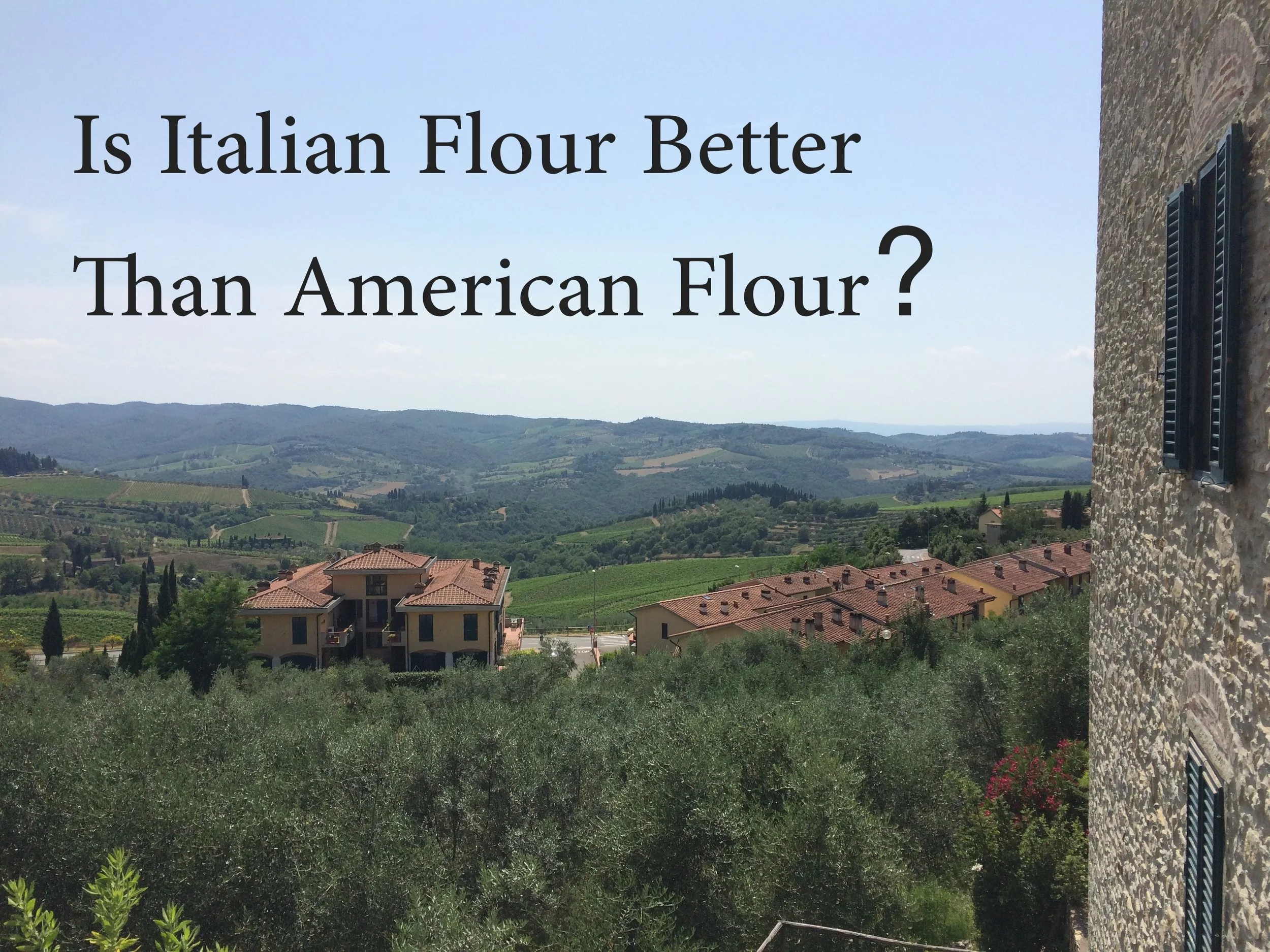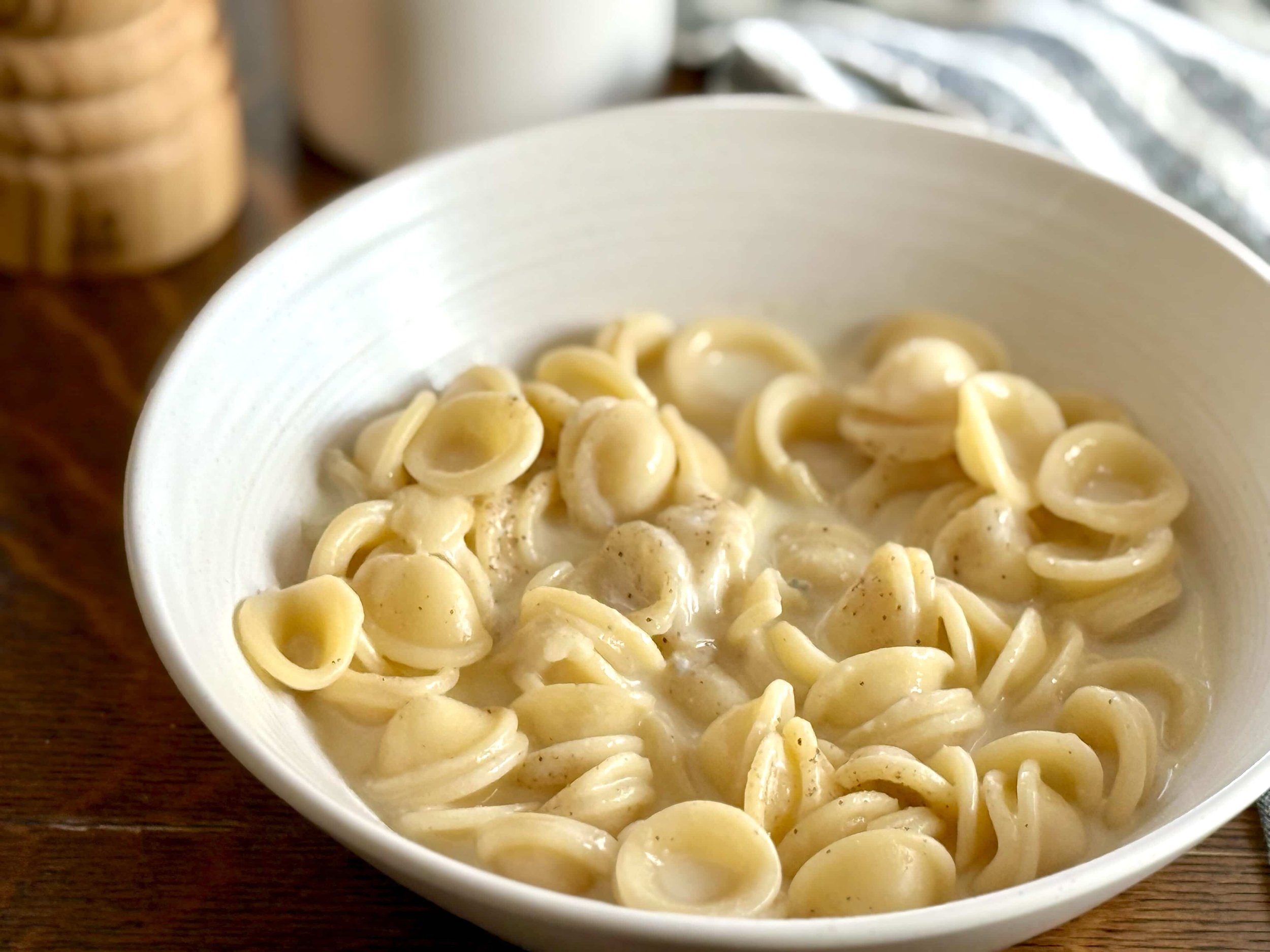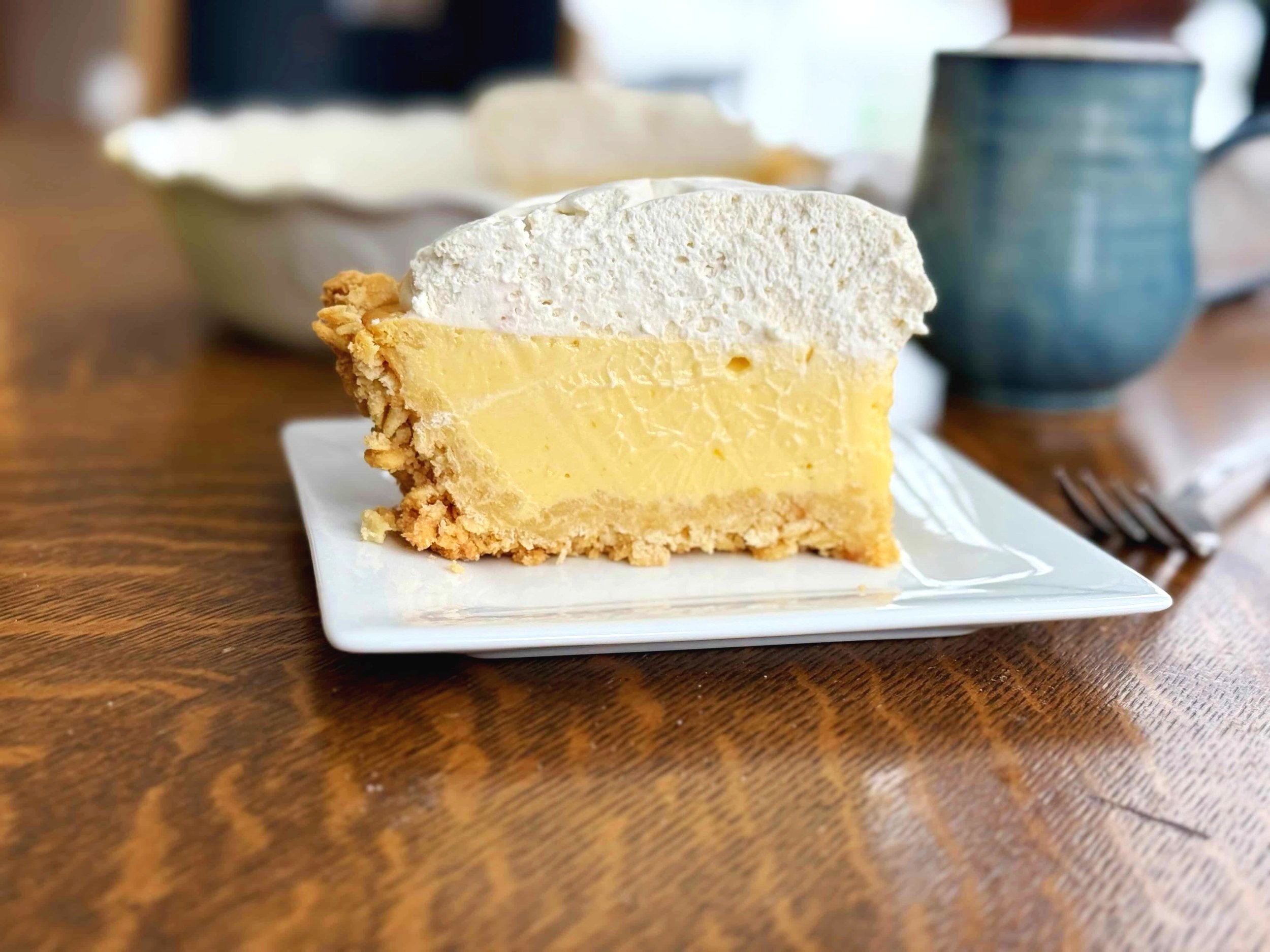Why You Should Use a Baking Scale
/Last Updated July 21, 2024
I am a full and happy convert to baking with a kitchen scale.
I grew up with measuring cups and spoons, and it wasn’t until I started going back and forth between Italy and Michigan that I started to get interested in weighing, rather than measuring by volume. Or perhaps it was when my mom, my brother and I started to get serious about our pour over coffee method, which requires a scale. Or maybe, when I started my first sourdough starter back in 2017. Or even, when I baked my way through Jacquey Pfieffer’s “The Art of French Pastry”. It’s been such a blissful blur of weighing ingredients, I can’t even remember which was the first reason I got a kitchen scale!
While there is absolutely nothing wrong with measuring cups and spoons, it is an inexact science. You cannot measure exactly with a measuring cup. If you measure 1 cup of flour, then measure another, and another, each cup measured in the measuring cup would have a different weight. One might weigh 138g. The next 118g. The next 127g. But you wouldn’t know that unless you were using a scale in the first place. You would only know that, say, your cookie dough turns out a bit differently each time.
The more comfortable you are in the kitchen and know how a recipe should look and feel, the easier it will be to use measuring cups and spoons and make adjustments accordingly. This lends better when you’ve spent time making the same recipes over and over again, or are luckily enough to have a mom or mentor in the kitchen with you, to guide you. It’s a bit harder when you’re learning on your own how to bake and cook. Knowing how recipes should turn out is an invaluable skill to have no matter how you measure, but using a scale will help you get those correct, consistent results that will be harder to achieve when using cups. In short, using a scale helps to take the guesswork out.
At least for an American, where measuring cups and spoons reign supreme in the land of baking, it may seem more approachable to use measuring cups and spoons rather than a scale. That’s probably what you grew up with, or what most bloggers use. The irony is that the scale is more precise, which will give you more consistent results and end in less frustration. It may feel like a leap of numbers and math, but investing in learning to use a kitchen scale is very rewarding and worth it. I have yet to meet someone who switched over and regretted it. On the contrary, they usually sing their scale’s praises and wonder how they ever baked without it.
Not convinced yet? Here are some of my top arguments to get you to try a scale. :)
This post may contain affiliate links. If you make a purchase using these links, Jennyblogs may receive a small commission, at no extra cost to you. This helps to support Jennyblogs. Where possible, links are prioritized to small businesses and ethically and responsibly made items. For further information see the privacy policy. Grazie!
Less dishes
Yes, you heard me. Less dishes! Since everything is weighed right in the bowl or baking vessel, you don’t have to wash measuring cups and other utensils needed.
Faster
When you use less dishes and everything can go straight into the bowl or pan it needs to, it’s more efficient and thus quicker.
More Precise
This point has already been pretty well covered above, but it’s the top point chefs and bakers usually give for using a kitchen scale. More precision, more consistent results, happier bakers.
Opens up the world of baking beyond America
If you know how to use a kitchen scale and how to bake with cups and measuring spoons, much more of the baking world opens up to you. Not only will European (including French and Italian!) recipes come within reach, but also things like sourdough. French cuisine, especially if you want to get into the precise and technical world of french pastry, will be much easier if you use a kitchen scale. Sourdough is very impractical when you don’t use a scale. There are already so many variables in sourdough you wouldn’t want to throw yet another variable in by trying to measure by volume.
If you think of measuring by weight as a different language, then any recipe from Europe or beyond would have to be “translated” into measuring with cups and spoons. You would only have access to the recipes that someone took the time to “translate”. Instead, learn the language, and you can make any recipe you want, no having to wait for someone to translate it for you or simply not make it because you don’t have a scale or don’t know how to measure by weight.
Easier to scale recipes up and down and customize
While most recipes are easily scaled up or down by halving, doubling, quadrupling, etc., what happens when you want to customize the recipe more?
If a muffin recipe makes 8, and you want an even 12 muffins instead, you need to multiply the recipe by 150% or 1.5. That’s much trickier when working with cups, teaspoons, and their fractions. If this muffin recipe calls for 1/3 cup oil, do you want to multiply that by 1 1/2? It’s much nicer to multiply 75g oil x 1.5 = 113g. Multiplying numbers is easier than multiplying fractions. I heart kitchen scales!
Easier to Bake with Children
Honestly, I initially had this as a con, but even as I was writing it out I realized it largely depends on personal preference and age of children.
Using a scale allows a child to happily scoop away, while the scale is still telling you precisely how much has been put in. Older children can watch for the number they’re aiming for. A 2 year old might not comprehend the idea of scooping in 240g of flour, but an 8 year old could! In fact, some kids might find aiming for a number on a scale easier than trying to figure out cups and fractions. With younger children, you might decide that pre-measuring (in a separate bowl on the scale) is easier, before letting them add that ingredient to the main bowl, to avoid adding too much of an ingredient that then becomes difficult to remove the excess. This does negate the “no extra dishes” pro of using a scale, but hey, isn’t having kids just all about cleaning up extra messes anyway?? Haha.
Measuring with cups requires being careful not to pack the flour in and measuring to precise lines, among other things. With all the scooping, spilling, playing that is potentially going on with the budding cooks, it’s easy to lose track of what has been put in the bowl, or just how much flour was packed into that measuring cup. For younger children, I like to measure out ingredients for them, and just let them dump and help with mixing.
Either way, baking requires basic math skills and is good for practice! In the end, you’re spending quality time with the kids in your life, they’re learning important skills, and even if what you’re making doesn’t turn out perfectly, they’re generally proud as a peach of their lumpy, misshapen cookies. :)
Ok, but what are the cons?
We’ve covered some pretty big pros to using a kitchen scale, what about the cons? Honestly, I’ve come across very few, but it’s fair to talk about the potential drawbacks.
Having to convert recipes to grams
The single biggest drawback to switching to using a scale, is that you may have to convert all or most recipes you use from cups to grams.
The exception to this would be if you use a lot of online recipes on blogs, often the recipes are written on printable “recipe cards” which can be converted from cups to grams with the click of a button. Despite these wonderful internet things I’ve found too many errors for comfort so I still convert all my recipes manually. Often the errors come into play with unsual ingredients or measurements, or those subtleties in a recipe measurement that an auto translate just doesn’t pick up on. I have many ingredient weights memorized (is my geek showing?) so I often catch these errors by simply scanning converted recipes on these recipe cards.
Converting your own recipes can be a daunting task, but if you give yourself just an extra 5-10 minutes before making each recipe to convert the measurements, it’s really quite manageable. That way you’re doing just a recipe at a time, one a day or however often you bake or cook, and it’s not overwhelming at all.
In fact, I’ve done half of the work for you by creating this master list of ingredient weight conversions. All weight measurements on that list have been duly researched and checked for accuracy. All the recipes on Jennyblogs have been converted using this list. While some ingredients may inevitably vary (1 cup of raisins may differ in weight from another cup of raisins, for example), usually the ones that do vary are the ones least likely to mess up a recipe. (Having a few extra raisins in a raisin bread recipe will not ruin your bread).
Scale turns off mid-measure
If you have a kitchen scale that turns off automatically, beware. This is a big con, but also an avoidable one. Simply don’t let it stay on too long before adding something new.
Despite best intentions, it probably will happen to you at some point, if not frequently. (This has happened to me more times than I should admit. I should know to tap the scale first or turn it off and on again before continuing! Alas.)
What do you do if/when your scale turns off on you?
If you only have one thing in your bowl, it’s no big deal: simply take it out and start over.
If you have other ingredients in the bowl, that’s where it gets tricky and you’ll have to guess how much was in there, or do some math. To figure out exactly how much you have in there, place a new clean bowl on the scale, tare so it reads 0, then transfer your bowl of ingredients to the new bowl. Add up the weight of the ingredients you have in the bowl, then subtract that number from the number on the scale. What’s left is the mystery weight of the ingredient you half measured before your scale turned off. Clear as mud? Here’s an example:
Let’s say you’re making muffins, and you measure into the bowl 150g of sugar, 150g brown sugar, and now you’re adding 56g of oil into the bowl. The scale turns off mid measure and you didn’t see how much oil you had measured. Take the bowl off the scale. Place a new bowl on the scale, and tare so the scale reads 0. Now pour the bowl of ingredients into the new bowl and note the number. Let’s say it says 338g. You know you have 150g + 150g = 300g of other ingredients in the bowl, so you must have 338g - 300g = 38g of oil in the bowl. You need to add 56g - 38g = 18g more oil to your bowl!
Now, all of this is easily avoided completely by simply investing in a scale that has the option to STAY ON until you turn it off. I’ve dealt with the auto-off for years and just recently upgraded to this larger capacity scale. The auto-off can be turned off and it is WONDERFUL. Of course, now I have to remember to turn it off when I’m done! It takes up a bit more space than a flat scale, but it feels like the professional scales that I would often use in the commercial pasta kitchen in Italy.
Baking with others
This is a very, very minor thing. At this point. I’m just trying to find some negatives.
One of the small cons I’ve found is that it’s trickier to bake with others. If you and a friend are baking together and you have a newfound love of using a kitchen scale but they prefer cups and measuring spoons, well, what do you do?
You’d either have to teach them how to use a kitchen scale or go back to using measuring cups and spoons. Neither is a big deal, but if you don’t want to take extra time, using cups and spoons would probably be the way to go.
On the flip side, knowing how to use a kitchen scale would make baking with a European friend much easier, since you already know their baking “language.”
I guess that’s all I can come up with for now for cons…do you have any?
Hopefully this has given you plenty of food for thought, and will lure you to try baking with a kitchen scale, mwahaha!
Alright, I want to use a kitchen scale! Now what?
If you decide you want to start using a kitchen scale and would like help converting some recipes from cups to grams, you can use this master list of Baking Measurement Conversions I’ve compiled over the last years as I’ve been converting and creating new recipes. All the recipes on Jennyblogs uses this list for absolute consistency!































